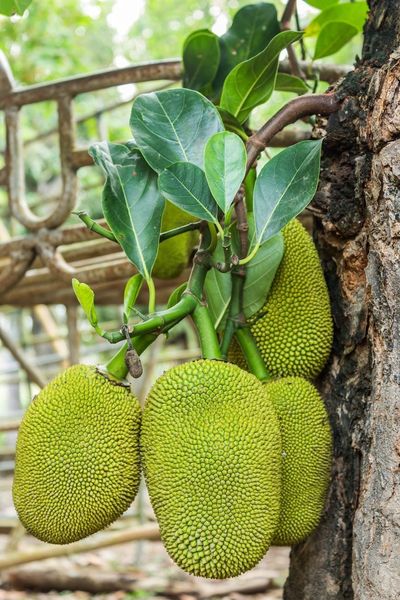When to Pick Jackfruit
Jackfruit was one of the earliest cultivated fruits and is still a staple crop for subsistence farmers in India to southeast Asia, where it is also used for timber and medicinal uses. A large fruit, most come into ripening in the summer and fall, although an occasional fruit may ripen during other months. Jackfruit harvest almost never happens during winter months and early spring. About three to eight months after flowering, start checking the fruit for ripeness. When the fruit is mature, it makes a dull, hollow noise when tapped. Green fruit will have a solid sound and mature fruit a hollow sound. Also, the spines of the fruit are well developed and spaced, and slightly soft. The fruit will emit an aromatic aroma and the last leaf of the peduncle will yellow when the fruit is mature. Some cultivars change color from green to light green or yellowish brown as they ripen, but color change is not a reliable indicator of ripeness.
How to Harvest Jackfruit
All parts of a jackfruit will ooze sticky latex. As the fruit ripens, the quantity of latex lessens, so the riper the fruit, the less of a mess. The fruit can also be allowed to leach out its latex prior to harvesting jackfruit. Make three shallow cuts in the fruit a few days before harvesting. This will allow the majority of the latex to ooze out. Harvest the fruit with clippers or loppers or, if picking jackfruit that is high up on the tree, use a sickle. The cut stem will exude white, sticky latex that can stain clothing. Be sure to wear gloves and grungy work clothes. Wrap the cut end of the fruit in a paper towel or newspaper to handle it or just lay it to the side in a shaded area until the flow of the latex stops. Mature fruit ripens in three to ten days when stored at 75 to 80 degrees F. (24-27 C.). Once the fruit is ripe, it will start to degrade rapidly. Refrigeration will slow the process and allow ripe fruit to be kept for three to six weeks.
